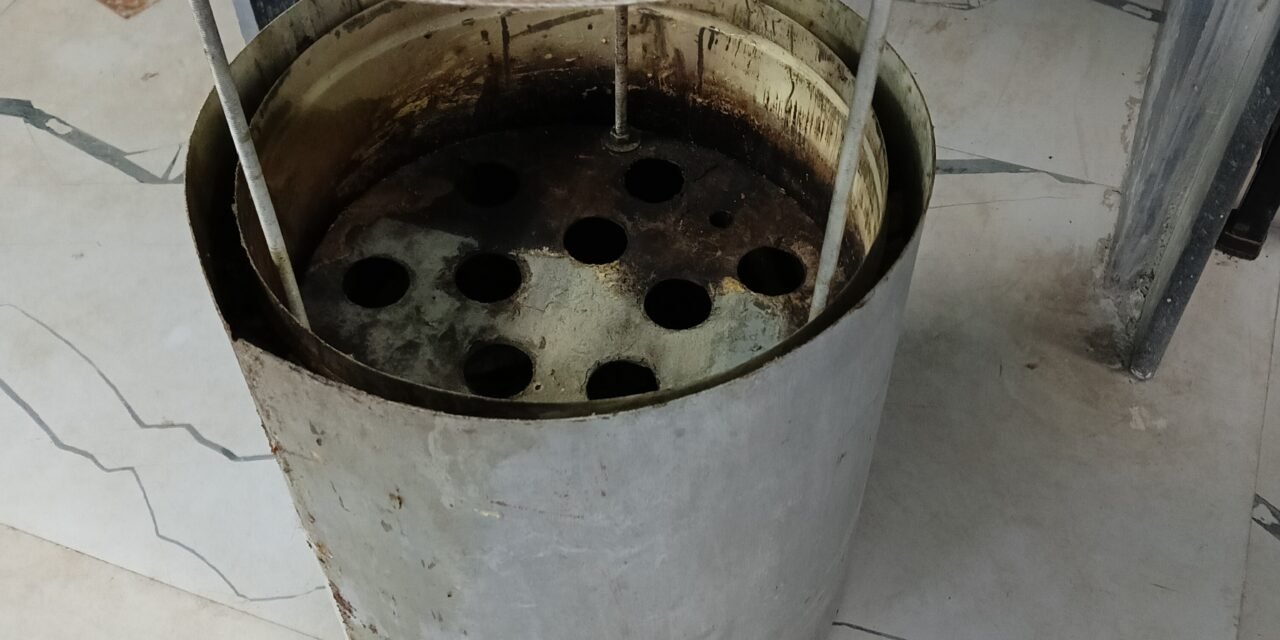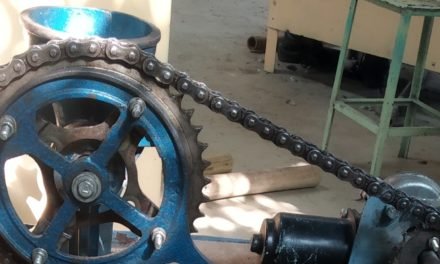Chemical Oxygen Demand (COD) is a test that measures the amount of oxygen required to chemically oxidize the organic material and inorganic nutrients, such as Ammonia or Nitrate, present in water. COD is widely recognized as an indicator of wastewater influent and effluent quality.
COD is measured via a laboratory testing in which a sample is incubated with a strong chemical oxidant for a specified time interval and at constant temperature (usually 2 h at 150°C). The most commonly used oxidant is potassium dichromate, which is used in combination with boiling sulphuric acid.
Need to design and fabricate new COD digester
In Vigyan Ashram Soil lab we have COD machine(designed by Vigyan Ashram) to perform COD test but recently when soil lab team performed COD test, the oil inside the cylindrical vessel which is media to transfer required temperature to COD tubes caught fire flames, fire extinguisher gas was sprayed on flames and somehow a big accident was prevented. From this the idea to design new type of COD testing machine emerged.
9/10/24
New project to design COD machine was assigned to me. Measurements of current COD machine were taken.

11/10/24
Read previous blogs on COD machine. Studied working of COD machine, about sensor used and electrical junction unit.
15/10/24
Raised discussion with Dixit Sir and Prasad Sir on designing new COD machine. In our COD digester edible oil was used as a heat transfer media but it had a problem of carrying fire flame, we came up with some different idea of using combination of sand and metal chips or sand and copper wire as a heat transfer media in COD digester which will not catch fire and will be safer to perform COD tests.
In this discussion we thought about using heating media other than oil. We came up with different ideas as follows
- Mixture of sand and oil
In a vessel fixed with heater in it, add a thick layer of sand and oil mixed upto 10 cm above heater. Insert aluminium tube stand in mixture. Add a layer of dry sand over it so that the mixture is not exposed to oxygen and possibilities of catching fire will become zero. Sand has low conductivity, it is heated through thermal conduction and oil is heated through convection. In this case, conduction and convection both will form and get the required temperature for oxidation of sample i.e 150 degree Celsius without any risk of fire.
2. Sand + metal chips and sand + copper wire
We thought of combination of sand and metal chips as metal is a good conductor of heat, insert metal for heat treatment inside sand. Metal will heat and provide heat to surrounding sand which will lose heat to aluminium stand containing COD tubes. Similarly we took more interest in specific metal and thought of copper wire which has high thermal conductivity of 398 W/mK and specific heat of 0.385 J/gK . Copper wire inserted in sand will provide efficient heat transfer.
Hence, we thought about various combinations for a media, out of these combinations I will study there thermal properties and decide accordingly which combination as a media to be used
16/10/24
Collected wires from scrap
Table
| Substance | Thermal Conductivity | Specific heat |
| Sand | 0.114 W/mK | 0.830 J/g K |
| Aluminium | 235 W/mK | 0.9 J/g K |
| Copper | 398 W/mK | 0.385 J/gK |
After studying the thermal conductivity and specific capacity of above substance, from above table it is observed that the use of combination of sand and copper wire as a media is best for the heat transfer. Copper wire will heat and transfer heat to surrounding sand, sand will transfer heat to aluminium stand which contains COD glass tube.
26/10/24
Removed insulation on copper wire, by putting wires in gasifier container and ignited from below,

Total copper wire we got 800 gm.
COD digester design and BOM





